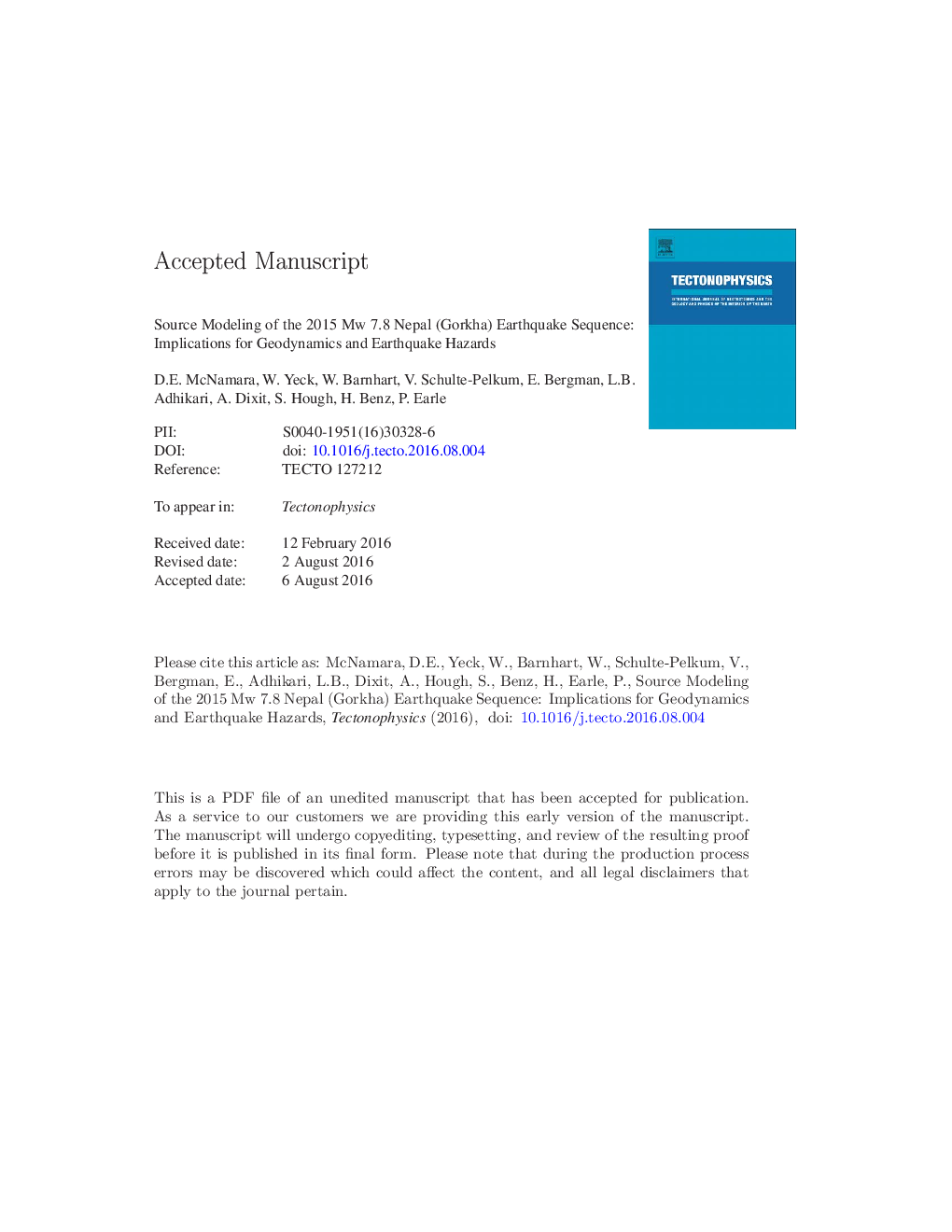| Article ID | Journal | Published Year | Pages | File Type |
|---|---|---|---|---|
| 5781605 | Tectonophysics | 2017 | 42 Pages |
Abstract
Major results from this study include (1) a comprehensive catalog of calibrated hypocenters for the Gorkha earthquake sequence; (2) the Gorkha earthquake ruptured a ~Â 150Â ÃÂ 60Â km patch of the Main Himalayan Thrust (MHT), the décollement defining the plate boundary at depth, over an area surrounding but predominantly north of the capital city of Kathmandu (3) the distribution of aftershock seismicity surrounds the mainshock maximum slip patch; (4) aftershocks occur at or below the mainshock rupture plane with depths generally increasing to the north beneath the higher Himalaya, possibly outlining a 10-15Â km thick subduction channel between the overriding Eurasian and subducting Indian plates; (5) the largest Mw 7.3 aftershock and the highest concentration of aftershocks occurred to the southeast the mainshock rupture, on a segment of the MHT décollement that was positively stressed towards failure; (6) the near surface portion of the MHT south of Kathmandu shows no aftershocks or slip during the mainshock. Results from this study characterize the details of the Gorkha earthquake sequence and provide constraints on where earthquake hazard remains high, and thus where future, damaging earthquakes may occur in this densely populated region. Up-dip segments of the MHT should be considered to be high hazard for future damaging earthquakes.
Related Topics
Physical Sciences and Engineering
Earth and Planetary Sciences
Earth-Surface Processes
Authors
D.E. McNamara, W.L. Yeck, W.D. Barnhart, V. Schulte-Pelkum, E. Bergman, L.B. Adhikari, A. Dixit, S.E. Hough, H.M. Benz, P.S. Earle,
